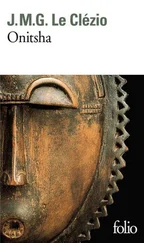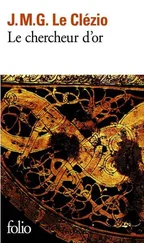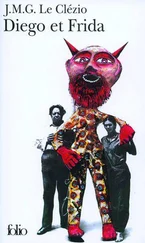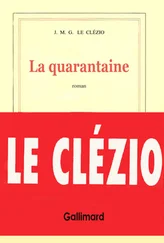Eléazard’s notebooks
THE WEIGHT OF THE SOUL. From Euclides, ice-cold as usual: “Wind, just wind … Believe it or not, the air in our lungs has weight as well. Your Kircher weighed his last sigh; it’s taking introspection a bit far, don’t you think?”
NOVALIS made a Catalogue raisonné of the operations man has permanently at his disposal: he names saliva, urine, emissions of semen, putting your finger in your mouth to make yourself be sick, holding your breath, changing position, closing your eyes, etc. In passing, he wonders whether there might not be some possible use for excrement. Marcel Duchamp was to add to these: excess pressure on an electric push-button, the growth of hair and fingernails, starting with fear or amazement, laughing, yawning, sneezing, twitching, giving hard looks, fainting, and he too was to suggest a “ transformer to make use of [all] these little bursts of wasted energy .”
SIX GRAMS of soul …
I DON’T KNOW WHAT gives rise to the impression that henceforward Athanasius Kircher is part of my family. He could be sitting here, right beside me, his hat askew, shaking the skirt of his cassock to cool his legs. A familiar figure, with sparks of genius here and there, but very banal most of the time. A dreamer who enjoys life, a brother, a friend …
FRIDAY, TEN O’CLOCK in the morning: letter from Malbois.
Dear Eléazard,
I apologize for the great delay in answering your questions. It wasn’t that easy and demanded quite a bit of work, though I’m afraid you’re not going to like the result.
First of all I researched the passages that you thought dubious in the works of Mersenne, La Mothe Le Vayer and the few others, the titles of which you will remember. Your suspicions were well founded: there are plenty of disturbing similarities, sometimes even more, without it being possible to say who was plagiarising whom; as you know, it was common practice at the time, there were seldom any repercussions. I won’t go into details, they wouldn’t be of any use to you — you’ll soon understand why: when I went on to the second question on your list, the one concerning the dates of Caspar Schott, the whole edifice started to crumble. 1608–1666! (Confirmed from several different sources.) Since the virtuous Caspar departed this life fourteen years before his master, it was obvious that the part of the biography devoted to Kircher’s life after the latter date was apocryphal. There remained the possibility that someone else who had been with Kircher during those last years had continued Schott’s work with sufficient skill to imitate his “style.”
At once I went back to look more closely at certain elements that had tickled my fancy when I first read it: the Villa Palagonia only existed the way Schott describes it in the eighteenth century — between 1750 and 1760. As for the Désert de Retz, even if it is well known that it was inspired by Kircher’s miniature landscapes, it definitely dates from 1785!
By this point in my researches it had become clear that not a single line in the manuscript could be by Schott, that the whole must have been written after 1780 at the earliest, that is, a hundred years after Kircher’s death.
As you can well imagine, this conclusion cast doubt on all the rest, so I went about methodically picking out aspects that seemed suspect. There were quite a lot of little things (I even identified a maxim by Chamfort!), almost all of them impossible to verify, and I was about to tell you the stage my conclusions had reached when I reread that horrible poem by Von Spee. Even taking into account the fact that it was a translation from Latin — and that seventeenth-century poetry is really not my cup of tea — the lines seemed singularly anachronistic and devoid of meaning. By chance, or perhaps infected by the language games Kircher engaged in, I started looking at ‘The Idolator’ as an encrypted text. I have to say that I found the solution pretty quickly (a kind of rather convoluted acrostic). I won’t spoil it for you, I’ll let you work it out for yourself, but it’s clear someone’s been having you on, and with a vengeance! I hope you hadn’t gotten too far with it …
Take it with a pinch of humor, have a good laugh at it — if you can. And keep me informed: supposing you ever manage to find out who did it, I’d very much like to meet the guy before you strangle him.
See you someday,
C. Malbois
ONE O’CLOCK. I take it fairly coolly, but it doesn’t make me laugh. Impossible to get hold of Werner in Berlin.
SEVEN O’CLOCK: Spent the whole afternoon walking straight ahead. Hurt pride, of course. Once my initial irritation at having worked on these notes to no purpose had passed, I was above all mortified at not having discovered the hoax myself.
THE PROBLEM is not knowing whether a person really said what you made him say, but judging whether you managed to make him say it in a way that is true to him. Is not truth anything we find sufficiently suitable to accept it as such? The borderline case of satisfaction , as W. V. Quine put it. The person — Werner or someone else — who produced this sham comes closer to it than anything I could claim …
TO GO DOWN THE RIVER as far as Montevideo, to return to Lautréamont (to Voltaire?) just as turtles return to the beach where they were born to lay their eggs.
“IN A WORD,” Kircher says in his conclusion to his work on anamorphoses, “ there is no monster in whose shape you cannot see yourself with a mirror of this kind combining flat and curved surfaces .”
WHO WOULD ruin their lives making a distorting mirror like that? Was it in the hope of fooling me or of achieving precisely what came out of it? I can’t bring myself to believe that this document was produced with me in mind, but I’m also sure it wasn’t entrusted to me purely by chance. Werner has been manipulated, I’ve no doubt he passed the manuscript on to me in good faith. Having said that, the authorship of the text is hardly important, the only question is: who likes me enough to give me such a violent wake-up call? Malbois?
It was a one-in-a-million chance he’d spot that acrostic …
“BIOLUMINESCENCE occurs when a substance known by the name of luciferin (from the Latin lucifer , ‘the bearer of light’) combines with oxygen when an enzyme called luciferase is present. There is a chemical reaction that releases energy in the form of light.” (D. L. Allen) Literature, the name of light!
THE SOLUTION, PERHAPS … Neither darkness, nor light, nor twilight: studding with stars. Fireflies, living, random phosphenes in the depths of the night itself.
A MAXIM on a gnomon seen by Léon Bloy: “It’s later than you think.”
ALCÂNTARA: Are you sure you want to eat mussels?
When all’s said and done, Eléazard thought, was it not reasonable to assume that the whole biography of Athanasius Kircher might be a fabrication, in the subject’s own image. The proportion of fiction in the supposed writings of Caspar Schott represented more faithfully than any scientific study our poignant, unhealthy and obsessive determination to romanticize our existence. The message, if there was one, came down to this: the reflection always wins out over the reflected object, anamorphosis always has a greater power of truth than the object it at first sight distorts and transforms. Was not its ultimate goal to unite reality and fiction in a new reality, in a stereoscopic relief?
Eléazard quit his word processor and clicked on the file-manager icon. In the “Archives” folder he chose the file containing his notes, then asked to delete them.
“Are you sure you want to delete Kircher.doc? Yes. No.”
Читать дальше












